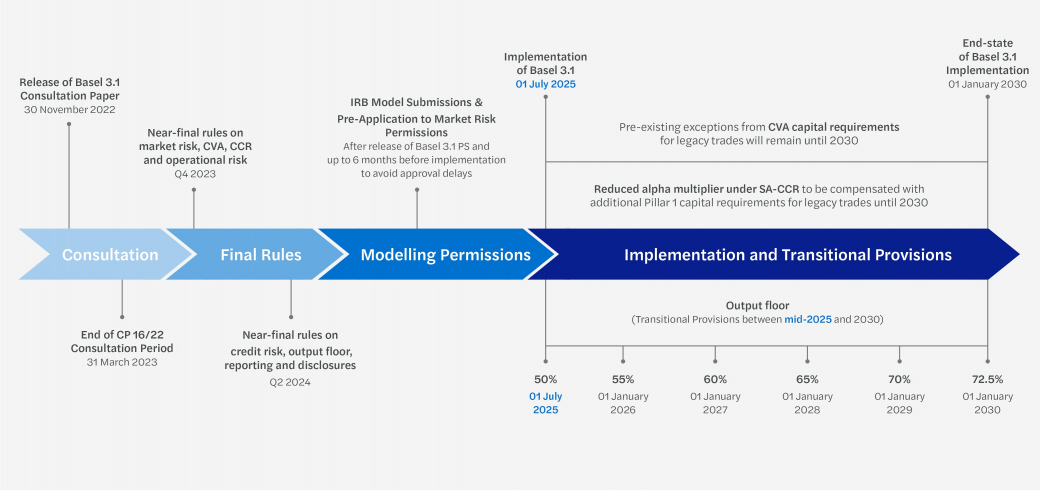What changes does the Basel 3.1 framework bring to the banking sector?
Basel 3.1 seeks to make two considerable adjustments to the regulatory landscape. The first will materially alter the composition of capital requirements by making major underlying changes in the calculation of Pillar 1 capital. In particular, this relates to credit, market and operational risk. While the second will make the capital regime more risk sensitive.
The aim of the regulations is to reduce the likelihood of future banking crises by encouraging transparency and more standardised practices, ensuring that banks have a more accurate and comparable assessment of their risk exposure.
Basel 3.1 is likely to have a significant impact on a large number of regulated banks and building societies in the UK. The scale of the changes being proposed, and their materiality, means this will be one of the most significant regulatory challenges facing firms in the medium term.
Who does Basel 3.1 apply to?
The PRA will replicate the scope of application currently in place under the CRR, with a few significant exceptions. The current framework applies to:
- PRA-authorised banks and building societies.
PRA-approved or PRA-designated holding companies and building societies. - Small domestic deposit takers (SDDTs) will be able to join the Strong and Simple Framework, a more proportionate prudential regime for less systemically important banks and building societies.
How will Basel 3.1 be implemented in the UK?
The current state of Basel 3.1 implementation in the UK is progressing steadily. The Financial Conduct Authority (FCA) and the Prudential Regulation Authority (PRA) have been working closely with banks to ensure a smooth transition and adherence to the new regulations.
Basel 3.1 has several impacts on the UK banking sector. One of the key objectives of the framework is to enhance the risk management practices of banks, particularly in relation to capital adequacy. Banks must therefore assess regulatory capital requirements more accurately, to absorb potential losses, reducing the risk of financial instability.
Basel 3.1 introduces stricter rules for measuring and managing risks, including credit, market, and operational risks. This encourages banks to adopt more robust risk management frameworks and processes to improve the sector’s overall resilience.
The implementation of Basel 3.1 also aims to promote transparency and accountability in the banking industry. Banks are required to enhance their reporting and disclosure practices, providing stakeholders with more comprehensive and timely information about their risk profiles and financial positions.
How did we get to Basel 3.1?
The Basel Framework can be traced back to four key instances. These are:
- The Basel Committee on Banking Supervision: The committee, comprising banking supervisors from various countries, responsible for developing and maintaining the Basel Framework.
- Basel I: The first iteration of the Basel Framework introduced in 1988 focused on credit risk and established minimum capital requirements for banks based on their risk-weighted assets.
- Basel II: Introduced in 2004, Basel II expanded on Basel I to introduce additional risk categories, including operational risk and market risk, providing more detailed guidance on how banks should assess and manage these risks.
- Basel III: Basel III, introduced in response to the 2008 financial crisis, further strengthened the regulatory framework by increasing the quality and quantity of regulatory capital banks are required to hold. It also introduced measures to address liquidity risk and leverage ratios.
This website uses cookies.
Some of these cookies are necessary, while others help us analyse our traffic, serve advertising and deliver customised experiences for you.
For more information on the cookies we use, please refer to our Privacy Policy.
-
This website cannot function properly without these cookies.
-
Analytical cookies help us enhance our website by collecting information on its usage.
-
We use marketing cookies to increase the relevancy of our advertising campaigns.


















